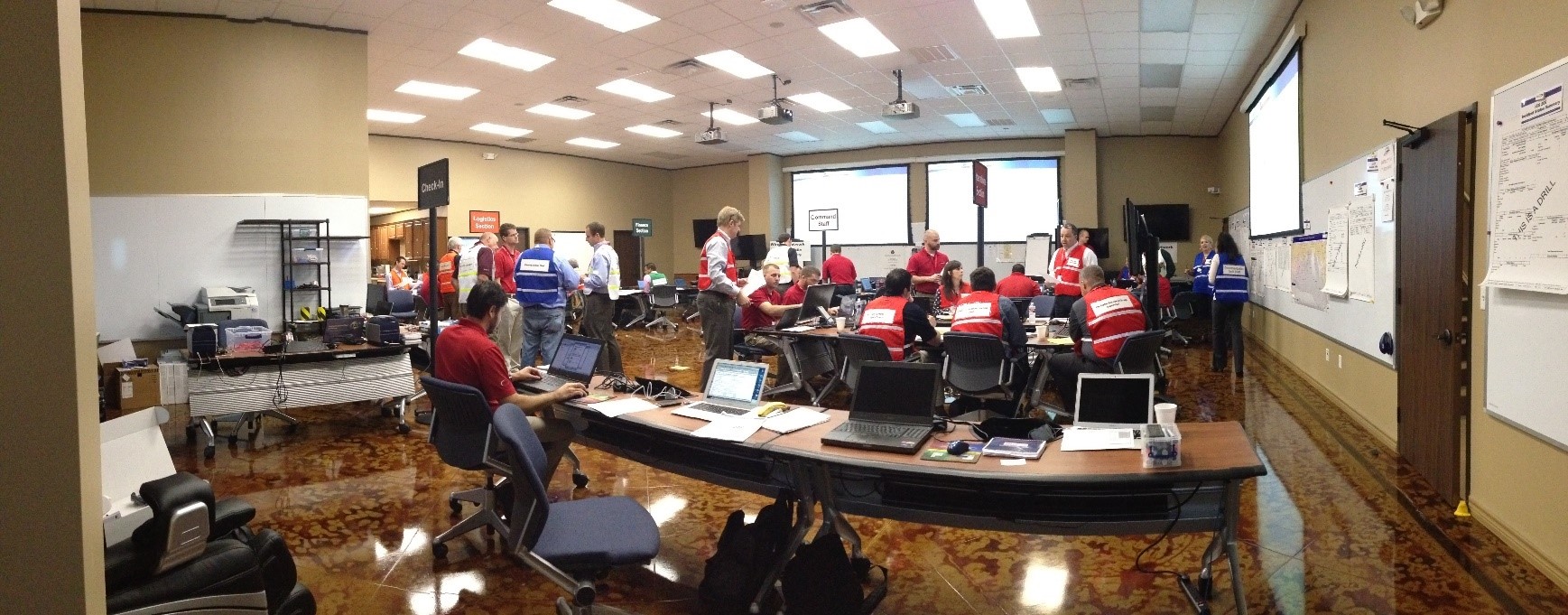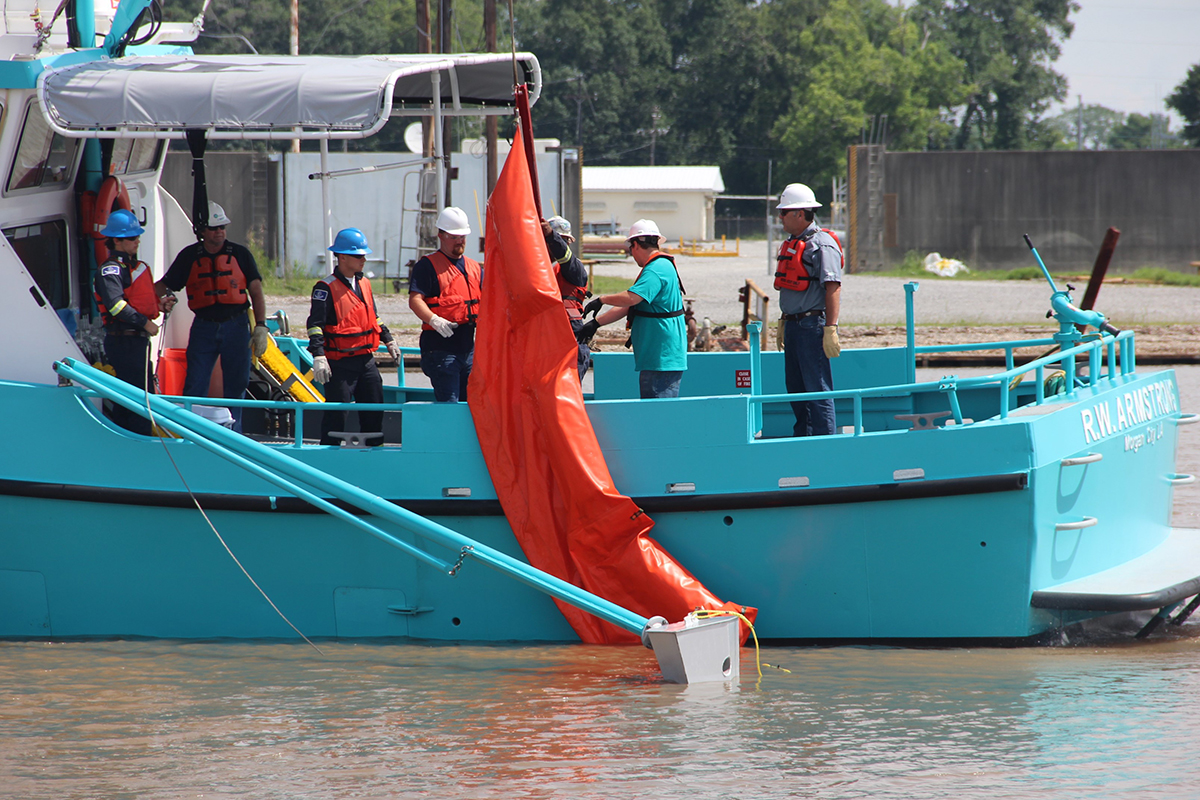
BSEE attends oil spill table-top exercises like the one shown above to evaluate the proficiencies of incident management team personnel in executing their responsibilities and the strategies described in oil spill response plans
Facility owners and operators, spill response contractors, and governmental officials collectively use training and exercises to improve skills and validate the efficacy of an Oil Spill Response Plan (OSRP). BSEE oversees these activities to ensure that industry personnel are properly trained and ready to support a command and control organization and operate their response equipment. Specifically, BSEE personnel may attend industry training sessions and/or exercises that are focused on the proficiencies of Qualified Individuals, Incident Management Teams, and Spill Response Operations Teams.
BSEE’s Oil Spill Preparedness Division (OSPD) manages the following training and exercise oversight functions in the Preparedness Verification role of the Oil Spill Preparedness Program:
Industry Training: OSPD verifies that owners and operators are conducting adequate training of their oil spill response personnel. Owners and operators must ensure that the response personnel listed in their OSRP are periodically trained to operate response equipment or staff key incident management organizational positions. OSPD independently confirms the quality and frequency of this training through a combination of training record reviews and in-person attendance at training sessions.
Industry Exercises: OSPD verifies that offshore owners/operators conduct their required oil spill preparedness exercises. Within a triennial cycle, owners/operators must exercise their Qualified Individuals, Incident Management Teams, Spill Response Operating Teams, and other resources and capabilities described within an OSRP. OSPD personnel attend these exercises in person and/or review these organizations’ documentation to confirm that the owner/operator conducts them.
Government-Initiated Unannounced Exercises (GIUEs): OSPD uses a GIUE as an opportunity to witness and evaluate, on a no-notice basis, a plan holder’s abilities to employ public and private equipment, resources, and staff to respond to a hypothetical oil spill. OSPD regularly plans and executes these exercises in close coordination with federal partners, such as the U.S. Coast Guard (USCG), the Pipeline and Hazardous Materials Safety Administration (PHMSA), and state government partners – all of whom have key roles associated with offshore oil spill preparedness and response. In a GIUE, BSEE and its interagency partners may focus on several objectives to test a particular OSRP. These objectives may include, but are not limited to, testing an operator’s:
- Ability to make timely notifications to emergency officials;
- Mobilize and organize staff to respond to the spill;
- Plan for and implement various spill response strategies and tactics;
- Deploy and operate response equipment;
- Establish effective communications within a Unified Command; and
- Respond to unique issues such as loss of subsea source control.
The owner or operator of an offshore regulated facility that is directed to participate in a GIUE must do so unless specific conditions exist that could compromise safety.
After the completion of each GIUE, Preparedness Analysts from the OSPD compile an after-action report that records lessons learned, and recommendations collected in the exercise.
National Preparedness for Response Exercise Program (NPREP)
A way industry can meet their exercise requirements under 30 CFR Part 254 is to comply with the National Preparedness for Response Program (NPREP) Guidelines. NPREP was developed to establish a workable exercise program that meets the intent of section 4202(a) of the Oil Pollution Act of 1990. NPREP provides a mechanism for compliance with regulatory exercise requirements, while being economically feasible for the government and industry to adopt and sustain. Chapter 6 in the latest NPREP Guidelines, published on October 2, 2018, addresses BSEE-regulated facilities.
BSEE works closely with other agencies to ensure consistency between different exercise requirements. BSEE and its counterparts in the U.S. Coast Guard (USCG), Environmental Protection Agency (EPA), and the Pipeline and Hazardous Materials Safety Administration (PHMSA) collaborate to execute and improve the NPREP guidelines. This collaboration formally occurs in the interagency PREP Compliance, Coordination, and Consistency Committee (PREP 4C) where BSEE is represented by the OSPD. The PREP 4C is chaired by the USCG and its purpose is to:
- Assist in the development of the national Area-level exercise schedules;
- Review and modify the NPREP guidelines; and
- Participate in periodic public meetings about the NPREP.

Oil spill removal organization personnel prepare to deploy an oil spill containment boom during an industry training session in the Gulf of America.
